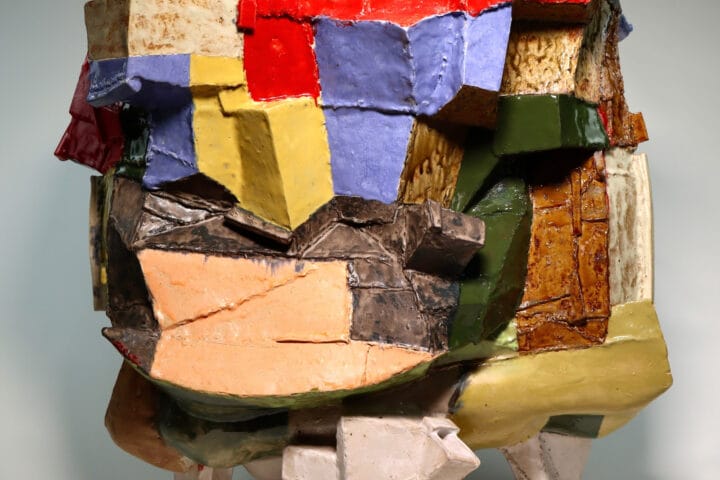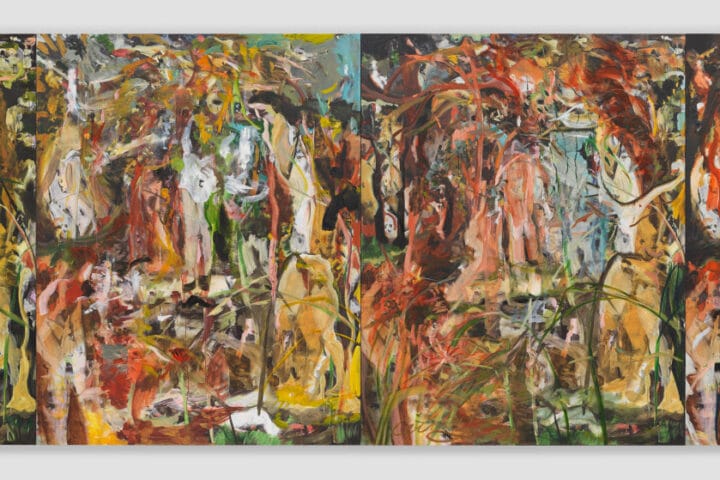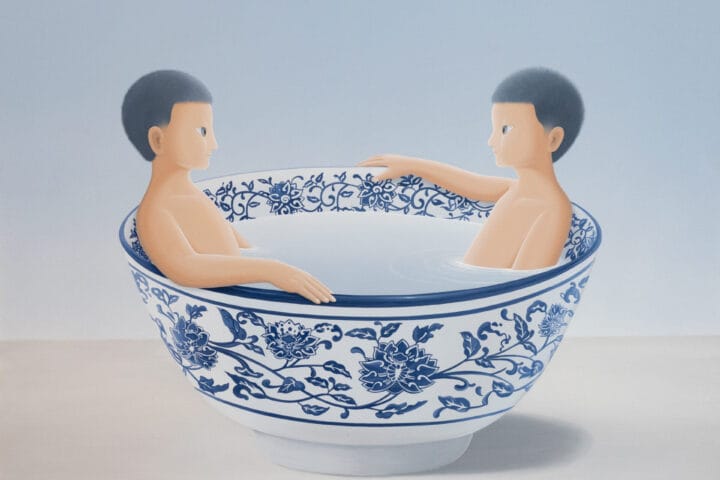NEW YORK, 23 November 2022 – A newly rediscovered, recently restituted, rare and important portrait by Bronzino, one of the leading artists of the Florentine Renaissance, will be offered at Sotheby’s New York in January 2023. Dating to circa 1527, this youthful and sophisticated work is a significant addition to the artist’s early corpus. Misattributed and lost to scholarship since the early 20th century, this painting will be published for the first time this spring by Carlo Falciani[1], in whose forthcoming article the idea that this may be a self-portrait of the artist will be explored.
Despite its recent emergence from relative obscurity, this portrait has a fascinating history of ownership. From the 17th century to the present-day prominent owners have included leading British scholars and parliamentarians as well as a trail-blazing female collector and socialite who traded the work for freedom but, tricked by the Nazis, died in the Kaunas Concentration Camp.
Works by Bronzino are extraordinarily rare to the market: in living memory only one other fully attributed painting has been offered on the open market – Portrait of a Young Man with a Book, which made over $9m in 2015. Of museum quality and in exceptional condition, this Portrait of a Young Man with a Quill and Sheet of Paper now comes to market for the first time since 1941 with an estimate of $3-5m, with the proceeds destined to benefit Selfhelp Community Services, aiding holocaust survivors in North America, and The Lighthouse Guild – a Jewish healthcare organisation.
[1] Carlo Falciani is Professor of Art History, Accademia di Belle Arti, Florence. He is a leading scholar in the field of 16th century Florentine portraiture, and has curated several important exhibitions in this genre, including co-curating the recent exhibition The Medici: Portraits and Politics, 1512-1570 at the Metropolitan Museum of Art in New York; the exhibition Bronzino, Artist and Poet at the court of the Medici, at the Palazzo Strozzi in Florence in 2010-2011; and the exhibition Pontormo and Rosso Fiorentino: Diverging paths of Mannerism, also at the Palazzo Strozzi in 2014.

Discovery at Sotheby’s:
From the 17th to early 20th centuries, this Portrait of a Man with a Quill and Sheet of Paper passed through several prominent collections with an attribution to Bronzino. In the early 20th century however, however, the portrait was erroneously attributed to several other Florentine artists and fell into relative obscurity. We know that Ilse Hesselberger acquired the painting in 1927 from the art dealer Julius Böhler as a work by 16th-century mannerist artist Francesco Salviati. After Ilse’s deportation, the painting was seized by the Nazis and taken to the Führermuseum in Linz, at which point it was reattributed (possibly by Herman Voss, the museum’s director) to Jacopino del Conte. After the war, the work hung unnoticed in various governmental offices in Germany.
Earlier this year, shortly after the painting had been restituted to the heirs of Ilse Hesselberger, grainy photographs of the work were sent to Sotheby’s. The painting itself then arrived at Sotheby’s offices in March 2022. It was immediately clear that, beneath the thick layers of dirt and discolored varnish that partly obscured its surface, this was a painting of exquisite quality. A photograph was sent to expert Carlo Falciani, whose excitement echoed that of the Sotheby’s specialists and confirmed their suspicions that this could be a portrait by the young Bronzino. The work was then carefully cleaned and restored to reveal the remarkably vibrant and well-preserved paint surfaces we see today.
As Carlo Falciani will discuss in his article, the painting is an early work, painted when the artist was still under the influence of his master Pontormo, a visionary artist who spearheaded an early expressive form of Mannerism. Pontormo’s style is felt heavily in Bronzino’s early portraits, especially in the way in which the sitter is represented; emerging from a simple darkened background, with a bright ovoid face, shining eyes and posed in a half-turn toward the viewer.
In around 1530 Bronzino began to move away from Pontormo’s style and consequently, Portrait of a Man with a Quill and Sheet of Paper (from circa 1527) sees the artist on the cusp of developing his independence, beginning to hone a distinct style that would dominate the remainder of his career. Later examples that further highlight the artist’s progression include Portrait of a Young Man (dated to the mid-1530s), held at the Metropolitan Museum of Art and Portrait of Lodovico Capponi (circa 1550 – 1552), held at The Frick Collection.
In these works, Bronzino aims to capture not only the likeness of his sitters but also their social standing and character, often through the details of their stance, dress and decorative clothing or surrounding objects. The details of Portrait of a Man are in keeping with this shift; a young man at a desk is surrounded by the paraphernalia of writing, including an inkwell precariously balanced on a pin with its top nearby on its side.
Carlo Falciani will also explore a hypothesis that this may be a rare and unique painted self-portrait by Bronzino – a possibility perhaps supported by the intriguing riddle in Latin that appears on the piece of paper in the painting.
Latin Inscription):
Cogitat ut scribat, verum ut non scribat imago
Sponte sua scribit, sed neque sponte id agit
Ergo invita facit minimè nam scribere tantum
Destinat, ulterius, scribere, ne sit opus
Translation:
The image thinks to write but in fact it does not write
It writes of its own accord, but it does not act of its own accord
Therefore, it does so unwillingly and writes as little as possible
It intends, further, to write, so that it is not necessary
This riddle may lend support to the identity of the sitter as Bronzino himself. Carlo Falciani hypothesizes: “In part, it helps that the riddle speaks of image and writing, something Bronzino, as a painter and a poet, was blurring the boundaries of throughout his career, balanced, like the inkwell on the sitter’s desk, between the two worlds.”

History of Ownership:
Upon inspection of the work, Sotheby’s specialists identified a few important labels on the reverse that served to link together the painting’s illustrious provenance. The painting had once been owned by Sir William Temple (1628-1699), advisor to King Charles II, an author whose writings shaped English landscape design, and employer and mentor of the satirist Jonathan Swift. It passed by descent in his family until it was sold in 1824 and remained in another prominent English collection, the Seymour collection, until 1920. It was later acquired by Hugh Blaker, an eminent English artist, collector, writer and dealer, curator of the Holbourne Museum in Bath, and adopted father of William Hartnell, the first Dr Who.
In 1927, the painting was purchased from the art dealer Julius Böhler by Munich heiress and collector Ilse Hesselberger – a highly intelligent businesswoman and socialite, famous for her lavish parties. Though of Jewish background, Ilse had in fact converted to the Protestant faith in 1908 – that, though, did not save her from what was to follow. The Hesselbergers’ lives became increasingly complicated after the Nazis took power in 1933. Ilse’s husband died in 1936, after which his factory was turned over to the Jewish Community for use as a technical college to teach young Jews skills that would increase their chances of getting a visa to escape Germany. Ilse herself travelled to Milan in August 1938, accompanying her daughter who was leaving for New York, but decided to return to Munich because she missed her friends and her home. Soon afterwards, she was forced to sell her country estate and liquidate many other assets, including this Bronzino. Ilse was persuaded that she would be allowed to leave Germany if she made a large contribution to the cost of the Milbertshofen transit camp – she made a donation of RM 100,000 in October 1941, but this did not protect her. She was placed on the first deportation train to the Kaunas Concentration Camp and was murdered on her arrival there in November 1941. She was aged 51. The Cuban exit visa arranged by her daughter arrived shortly after her execution.
The painting subsequently passed through the hands of three Munich-based dealers and was acquired in January 1941 by the Reichskanzlei through the agency of Frau. Professor Gerdy Troost, Hitler’s preferred interior designer. The picture then entered the collection of the Führermuseum in Linz, and along with many similarly looted works, ended up in the Saltmines at Alt Ausee. As the war was ending it was taken to the Munich Central Collecting Point, run by the Allies’ Monuments Fine Arts and Archives program, or ‘Monuments Men’. This group of approximately 400 service members and civilians safeguarded historic and cultural monuments confiscated by the Nazis from war damage as the conflict came to a close. After the war the painting hung in various governmental offices, first in Wiesbaden and then in Berlin, unnoticed and misattributed. Earlier this year, the work was restituted to the heirs of Ilse Hesselberger.
We are proud to be offering this brilliant, intriguing and magnificent portrait for sale in New York, offering the rare opportunity to own one of the finest Bronzino portraits in private hands, with an unusually complete and illustrious provenance.











